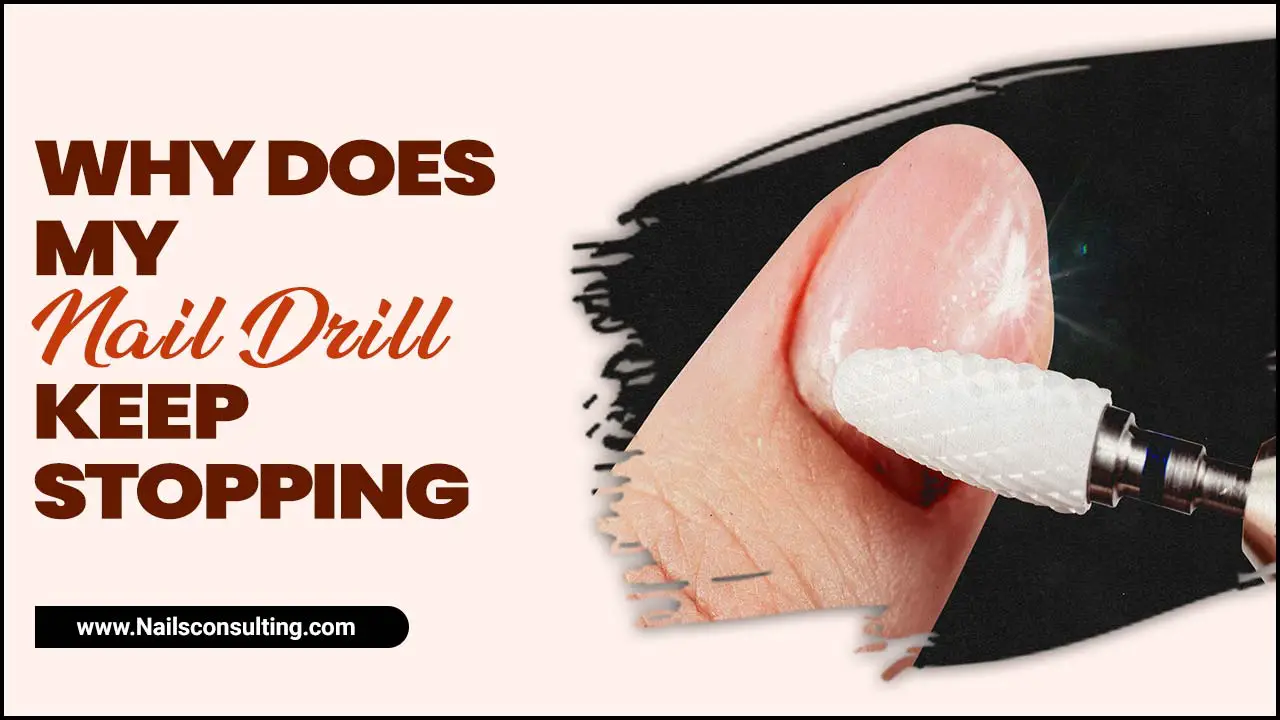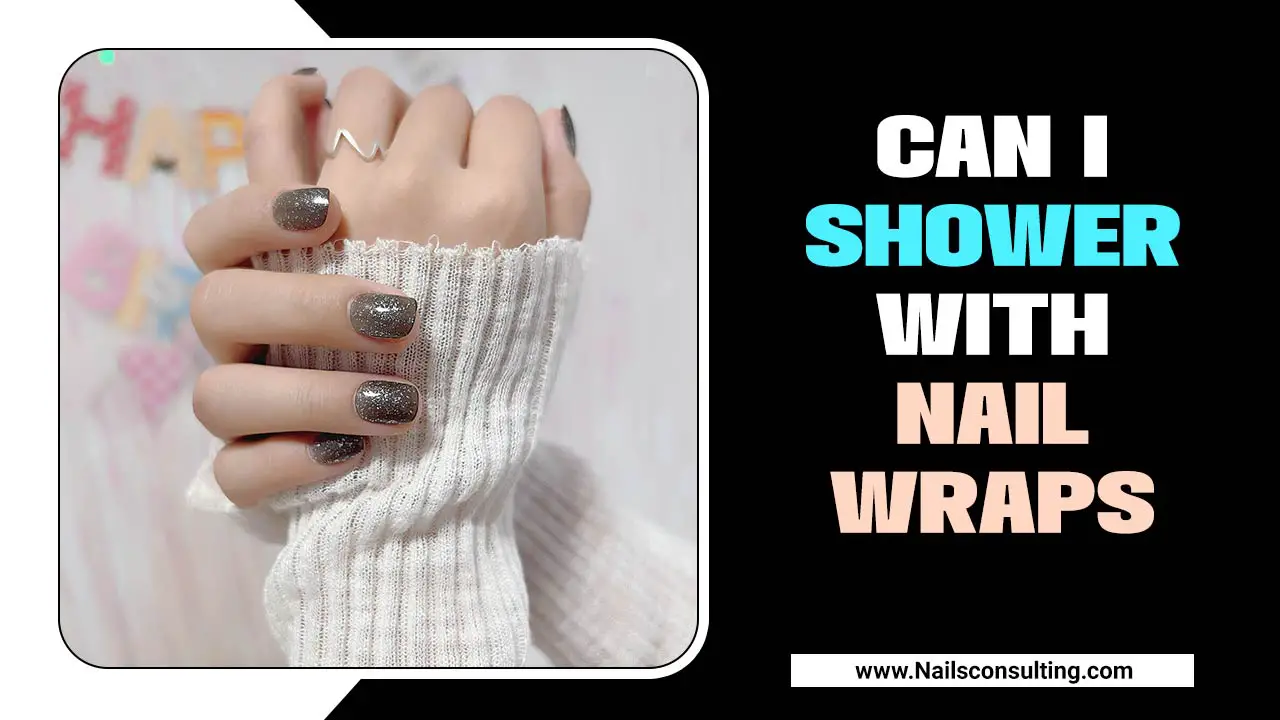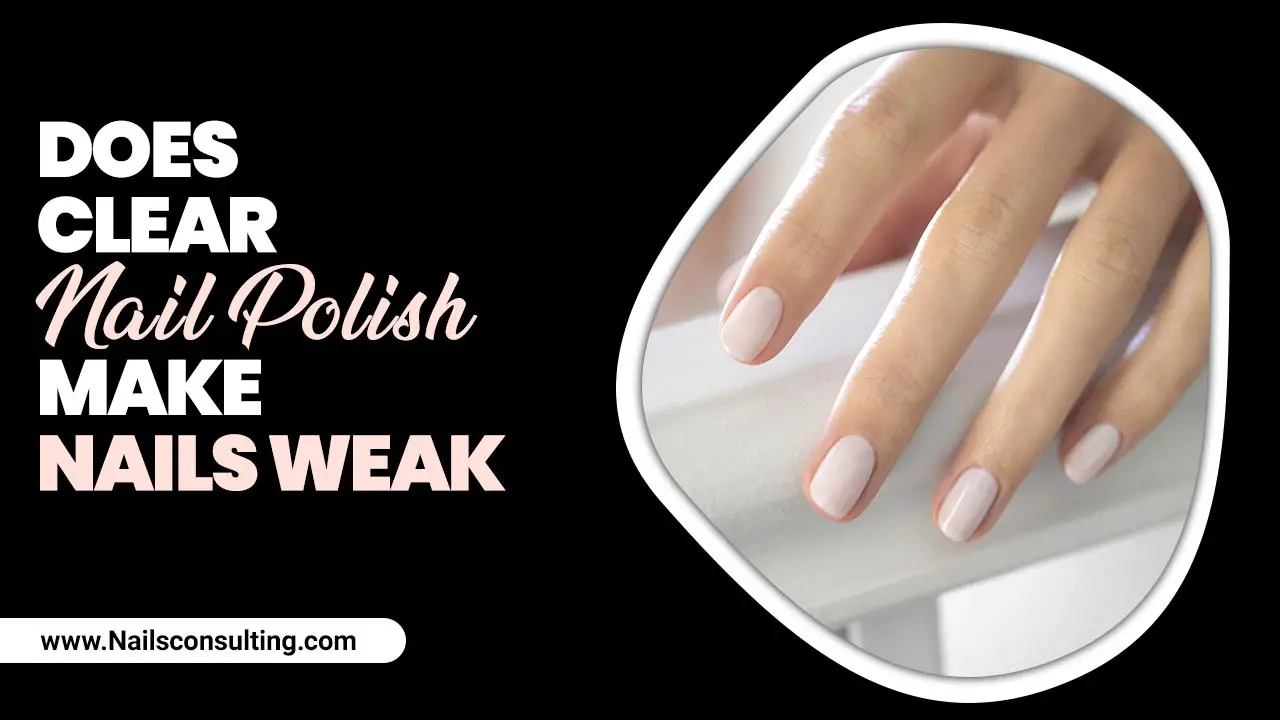Negative space French nail variations offer a chic, modern twist on the classic French manicure, leaving parts of your natural nail visible for a sophisticated, layered look. This guide breaks down popular styles and how to achieve them, making this trendy manicure accessible for all skill levels.
Dreaming of a French manicure that feels fresh and a little bit daring? The classic French is lovely, but sometimes we want to spice things up! If you’ve seen those gorgeous nails with little peek-a-boo windows or strategically unpainted tips, you’re looking at negative space French nails. They sound complicated, but trust me, they’re a fun way to get a salon-worthy look right at home. This guide will show you exactly how to master these stylish variations, so get ready to elevate your at-home mani game!
What Exactly is a Negative Space French Nail?
Before we dive into variations, let’s clear up what “negative space” means in nail art. Simply put, it’s any part of the nail design where the natural nail or a sheer polish is left uncovered. Instead of a solid color covering the entire nail, certain areas are intentionally left bare or painted with a very translucent shade. This creates a beautiful contrast and adds dimension. A negative space French nail takes this concept and applies it to the iconic French manicure structure, playing with the traditional white tip and the unpainted base.
Think of it like a minimalist masterpiece on your fingertips. The charm lies in the contrast between the opaque color (like the tip of a French manicure) and the transparent or bare nail. This design is super versatile, making it a favorite for those who love understated elegance or want to experiment with modern nail art without going too bold. It’s all about strategic color placement and embracing a bit of the natural nail.
Why Choose Negative Space French Nails?
There are so many reasons why negative space French nails have become a beauty staple. They’re incredibly chic and sophisticated, offering a modern update to a timeless classic. One of the biggest perks is their versatility – they can be dressed up for a special occasion or kept simple for everyday wear. Plus, they tend to be more forgiving because the visible natural nail can help disguise minor growth between manicures.
Here’s why you’ll love them:
- Modern & Stylish: They offer a fresh, contemporary feel that’s very on-trend.
- Versatile: Perfect for any occasion, from casual days to fancy evenings.
- Relatively Low Maintenance: The design can grow out more gracefully than solid colors.
- Visually Interesting: The contrast between color and bare nail is eye-catching.
- Beginner-Friendly: Many variations are easier to execute than full-coverage intricate designs.
Essential Tools for Your Negative Space French Mani
To achieve those perfect negative space French nails, having the right tools makes all the difference. You don’t need a whole nail art studio, just a few key items. Having these on hand will make the process smoother and give you that professional finish. Don’t worry if you don’t have everything right away; you can build your nail kit over time!
Here’s what you’ll need:
- Base Coat: Essential for protecting your natural nail and ensuring polish longevity.
- Top Coat: Seals your design and adds a glossy finish.
- Nail Polish Colors: Your choice of opaque color for the tips and a sheer nude or clear polish if desired.
- Thin Nail Art Brush or Striping Brush: For precise lines and creating the French tip.
- Nail Polish Remover: For clean-up mistakes.
- Cotton Swabs or Applicators: To dip in remover for precise cleanup.
- Cuticle Pusher or Orangewood Stick: To prep your nail beds.
- Nail File and Buffer: To shape and smooth your nails.
- Optional: French Tip Guides or Stencils: If you’re new to freehanding the tip.
Popular Negative Space French Nail Variations & How to Create Them
Now for the fun part! Let’s explore some of the most popular negative space French nail designs and break down how you can create them. Each variation offers a unique take on the classic, so you can pick the one that best suits your style.
1. The Classic Reimagined: Transparent Tips
This is perhaps the most straightforward and popular variation. Instead of an opaque white tip, you use a sheer, milky white or a pale nude polish for the tip. The rest of the nail is left bare or with just a clear base coat.
How to Create Them:
- Start with clean, prepped nails. Apply a good base coat.
- Paint your French tips using a sheer white or milky polish. You might need two coats for a slightly more opaque look, but keep it translucent. Use a thin brush for precision.
- Let the tip color dry completely.
- Apply a top coat to the entire nail.
This variation looks incredibly elegant and is perfect for a minimalist aesthetic. It’s a go-to for a polished, “my nails but better” vibe.
2. The Peek-a-Boo French: Cut-Out Designs
This is where negative space really shines! Here, you create design elements, often geometric shapes or lines, that reveal the natural nail underneath. For the French variation, this often means creating a colored tip that has a “cut-out” or a line revealing the nail.
How to Create Them:
- Apply your base coat.
- Paint your entire nail with an opaque color (e.g., a vibrant shade, a deep jewel tone, or even black). Let it dry completely.
- Now, it’s time to create the negative space. Using a thin brush and nail polish remover, carefully remove a thin line around the tip of your nail, mimicking the French smile line. Alternatively, use a very fine brush dipped in a cuticle balm or oil to “draw” a line where you want the negative space, then carefully paint your colored tip up to that line. The balm/oil will repel the polish.
- Another method for a cut-out tip is to paint the entire nail with your opaque color. Once dry, use a fine brush with a contrasting opaque color to paint a “border” around the tip, leaving a sliver of the original opaque color or the natural nail exposed.
- For a true “cut-out,” paint your opaque tip first. Then, using a thin brush and a contrasting color, paint a line directly on top of the opaque tip, leaving a small portion of the opaque tip or the natural nail visible.
- Clean up any mistakes with a brush dipped in nail polish remover.
- Apply a top coat.
This design requires a steady hand, but the result is striking and unique a true statement nail.
3. The Reverse French: Moon Mani Hybrid
While not strictly a “French tip,” the concept of leaving a section of the nail bare can be applied to the cuticle area, creating a hybrid. A reverse French leaves the lunula (the moon-shaped area at the base of the nail) exposed while painting the rest of the nail, often with a French tip applied to the free edge.
How to Create Them:
- Apply your base coat.
- Using a fine brush, paint the French tip in your desired color.
- Now, carefully paint the rest of the nail, leaving a semi-circle or a defined line at the cuticle area bare. You can use a precise brush for this or even a dotting tool to create a clean curve.
- Clean up edges as needed.
- Apply a top coat.
This variation can also involve leaving the cuticle “moon” bare and then applying a colored tip in the traditional French style. It’s a chic twist that draws attention to the nail’s base.
4. The Colored French Tip with Bare Base
This is a fun twist where the tip is colored using a vibrant shade, but the base of the nail remains completely bare. It’s modern, playful, and a great way to incorporate color.
How to Create Them:
- Apply a base coat to your nails.
- Using a thin nail art brush, carefully paint a French tip with your chosen colored polish. Aim for opacity in the tip.
- Ensure the polish doesn’t extend too far down the nail, leaving a significant portion of the natural nail bare as the base.
- Allow the tip color to dry completely.
- Apply a clear top coat over the entire nail.
This style really pops and is perfect for adding a splash of color without committing to a full-color manicure.
5. The Double French Line
This design adds an extra element of sophistication by incorporating two distinct lines. You can have a fine line of color at the very tip, and then another subtle line separated by a sliver of negative space closer to the cuticle, or even a colored French tip with a fine line of a contrasting color above it.
How to Create Them:
- Apply your base coat and let it dry.
- Paint the primary French tip with your main polish color.
- Once dry, use a very fine striping brush and a contrasting polish to carefully paint a second, thinner line just above the first tip. This creates a duality.
- Alternatively, paint a French tip, then use a fine brush and latex paint remover (or a very controlled amount of regular remover) to create a thin line of negative space between another layer of color, or simply between the tip and the rest of the nail.
- Carefully clean up any smudges.
- Finish with a top coat.
This technique adds depth and is perfect for those who love intricate yet understated details.
6. Geometric Negative Space French
Here, we move beyond the traditional curve to incorporate sharper lines and geometric shapes within the French manicure structure. Think sharp angles, V-shapes, or even squares at the tip, with negative space filling the rest of the nail.
How to Create Them:
- Apply base coat.
- Decide on your geometric shape for the tip (e.g., a sharp V, a straight line across the tip).
- Using a thin brush or striping tape (for very crisp lines), carefully apply your chosen color to form the geometric tip.
- Allow to dry completely.
- Use nail polish remover and a cleanup brush to refine the edges and create clean negative space areas.
- Apply a top coat.
This is a more modern and edgy take, best achieved with steady hands or the aid of nail tape.
Tips for Achieving Flawless Negative Space
Mastering negative space French nails isn’t just about the design; it’s also about technique. Here are some tried-and-true tips to help you achieve that clean, professional look every time.
- Prep is Key: Always start with clean, dry nails. Push back your cuticles and gently buff your nail surface for a smooth canvas.
- Thin Coats are Your Friend: For the opaque colors, opt for thin, even coats rather than one thick, gloppy layer. This prevents uneven drying and smudging.
- Patience is a Virtue: Let each layer dry completely before applying the next. This is crucial to avoid dragging the polish and creating a mess.
- Embrace the Cleanup Brush: A small brush dipped in nail polish remover is your best friend for correcting mistakes and creating super sharp lines. Dip it frequently to keep it clean.
- Use Quality Tools: Investing in a few good quality thin brushes or striping tools can make a huge difference in precision.
- Consider Stencils/Guides: If freehanding the French tip is a challenge, French tip guides or flexible nail stencils can provide a perfect template.
- Practice Makes Perfect: Don’t get discouraged if your first attempt isn’t flawless. The more you practice, the steadier your hand will become, and the better your results will be.
Understanding Nail Polish Finishes for Negative Space
The finish of your nail polish plays a significant role in how your negative space French nails will look. Choosing the right finish can enhance the sophisticated, modern vibe.
Here’s a quick rundown:
| Polish Finish | Description | Best for Negative Space French | Tips |
|---|---|---|---|
| Opaque/Cream | Full coverage, no shimmer. | Ideal for the colored tip portion. Provides a solid, defined color. | Use for bold tips or for creating sharp lines. |
| Sheer/Jelly | Translucent, allows natural nail to show through. | Perfect for a softer French tip style or for the “base” if you want a hint of color. | Builds color gradually. Great for achieving a milky or subtle French look. |
| Matte | Dull, non-shiny finish. | Excellent for contrast. A matte tip over a shiny, bare nail, or vice versa, looks very high-fashion. | Apply a matte top coat to specific areas for unique texture effects. |
| Glitter/Metallic | Contains shimmer particles. | Can be used for an accent tip, especially for festive occasions. | Best used sparingly in negative space designs to avoid overwhelming the pattern. |
For most negative space French variations, you’ll likely be combining an opaque polish for the main design element with the natural nail or a sheer polish for the negative space. Contrasting finishes can also add an extra layer of interest!
Caring for Your Negative Space French Nails
Keeping your beautiful negative space French nails looking their best is similar to caring for any manicure, but there are a few extra considerations.
Daily Care:
- Moisturize: Apply cuticle oil and hand lotion regularly to keep your nails and the skin around them healthy and hydrated. This also helps maintain the appearance of the bare nail areas.
- Wear Gloves: Protect your nails from harsh chemicals and excessive water exposure by wearing gloves when doing chores, washing dishes, or gardening.
- Avoid Using Nails as Tools: Resist the urge to peel things, scratch, or pry with your nails, as this can chip polish and damage the nail itself.
Extending Wear:
- Be Gentle: Treat your manicure with care. Avoid activities that could chip the edges.
- Reapply Top Coat: If you notice the top coat starting to wear down, especially on the colored tips, carefully reapply a thin layer to refresh the shine and protect the color.
- Touching Up Chips: For minor chips in the colored tips, you can carefully touch them up with a fine brush and your polish color. For larger chips or if the negative space becomes compromised, it might be time for a refresh.
FAQs About Negative Space French Nails
Q1: Are negative space French nails difficult to do at home?
A1: Some variations are surprisingly easy! Designs like the transparent tip are very beginner-friendly. Others, like geometric cut-outs, require a bit more practice, but tools like guides and thin brushes can help a lot.
Q2: What colors work best for negative space French nails?
A2: You can use almost any color! Classic French uses white, but modern variations look great with nudes, pastels, vibrant neons, deep jewel tones, and even black. The key is the contrast with the bare nail.
Q3: How long do negative space French nails typically last?
A3: With proper care, a well-applied negative space French manicure can last anywhere from 7 to 14 days, similar to a traditional manicure. The exposed nail growth might make them look good for a bit longer!
Q4: Can I do negative space French nails with gel polish?
A4: Absolutely! Gel polish works beautifully for negative space designs and offers increased durability. The process is similar, but you’ll need a UV/LED lamp to cure each layer.
Q5: What if I’m not good at painting a straight line for the tip?
A5: Don’t worry! You can use adhesive French tip guides or stencils for a perfect line every time. There are also flexible nail stickers available that can help create smooth curves.
Q6: Does the natural nail need to be perfect for negative space designs?
A6: Not at all! The beauty of negative space is that the visible natural nail can often look like part of the design. Keeping it clean and moisturized is key



